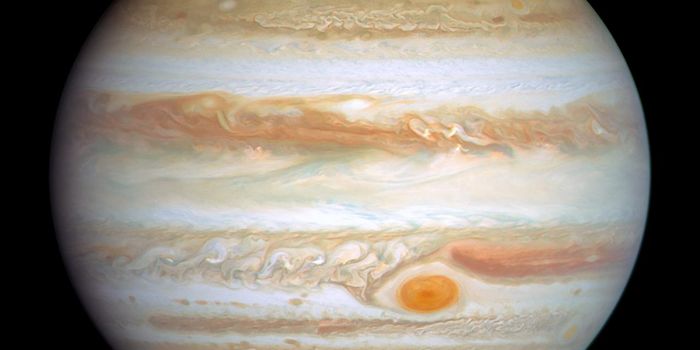New Pluto Terrain Colors Photographed by New Horizons Spacecraft
NASA's New Horizons spacecraft is set to perform its flyby of the dwarf planet Pluto next month, but you can bet NASA is taking as many sneak peeks as it can of Pluto before the spacecraft actually arrives there.
We've already learned more about the chaotic moon movements of Pluto and the interesting dark terrain of Kerberos, but perhaps Kerberos isn't the only body of mass out there with dark terrain.
New images captured by the LORRI imaging device onboard of the New Horizons spacecraft reveal that Pluto seems to have both a lighter side and darker side when it comes to the appearance of the dwarf planet's terrain.
New Horizons sends NASA low-resolution raw photographs that need to be processed by NASA to make them into clearer visuals, using a method known as deconvolution. In the high-contrast photographs below, you can see Pluto's various faces as it rotates on its axis:

"Even though the latest images were made from more than 30 million miles away, they show an increasingly complex surface with clear evidence of discrete equatorial bright and dark regions - some that may also have variations in brightness," New Horizons principal investigator Alan Stern says.
"We can also see that every face of Pluto is different and that Pluto's northern hemisphere displays substantial dark terrains, though both Pluto's darkest and its brightest known terrain units are just south of, or on, its equator. Why this is so is an emerging puzzle."
It is unknown what causes the strange coloring on the opposing poles of the planet, but some scientists believe the lighter pole could be evidence of a polar ice cap. Although there is no concrete evidence yet, New Horizons is currently racing towards Pluto and we will find out a whole lot more when it actually gets there.
If it is indeed ice, it'll raise more questions about the possibility of additional previously unknown life in our solar system.
The New Horizons Pluto fly-by is scheduled to occur on the 14th of July, after which, New Horizons will continue on past Pluto, yet further into outer space.
We're excited to see what discoveries the fly-by brings to the table; are you?
Source: Forbes








